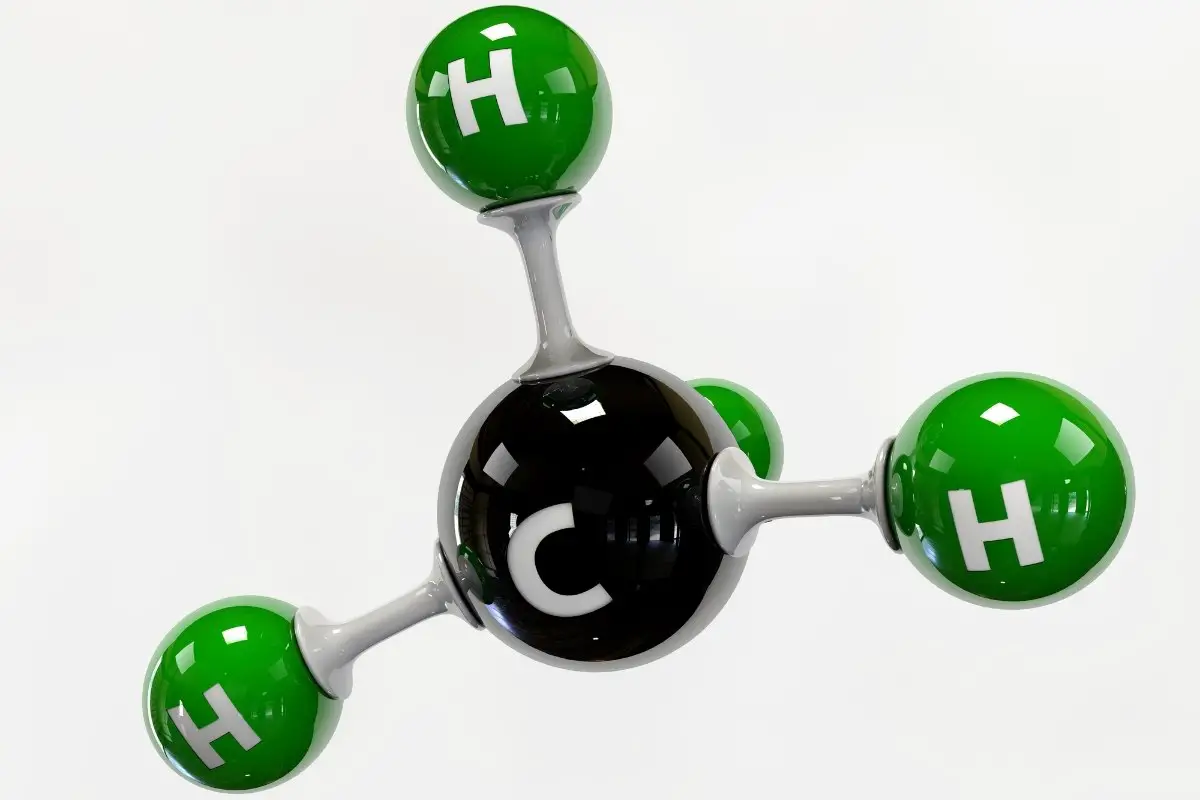
A Case for European Blue Hydrogen
October 19, 2021In August this year the paper “How green is blue hydrogen?” hit the academic press. Co-authored by Professor Howarth of Cornell University, the paper makes the case that reforming natural gas alongside carbon capture and storage (CCS) to produce blue hydrogen can generate more than 20% more greenhouse gas (GHG) emissions than the direct use of natural gas.
This conclusion follows an analysis of two blue hydrogen plants, one in the US and one in Canada, and, importantly, is based on two key assumptions: fugitive methane emissions from natural gas production are set at 3.5% following analysis of US leakage statistics, and the power supply for the CCS process is supplied from gas-fired generation. In addition, the two plants reviewed utilise steam methane reforming (SMR) technology, which is less efficient and has a lower carbon capture rates than autothermal reforming (ATR).
The need for caution in taking the Howarth paper at face value was highlighted within weeks of publication, as noted by the SINTEF blog article Assumptions Matter When Assessing Blue & Green Hydrogen.
Energy academics from the University of Cork, Ireland, the University of Sheffield, UK, Imperial College London, UK, the Oxford Institute of Energy Studies (OIES) and key hydrogen market participants also confirmed the need for caution to ICIS, highlighting the importance of the assumptions underpinning the Howarth paper.
The aim of this ICIS paper, written alongside Jamie Hamilton, PhD candidate at Imperial College London, is to compare Howarth’s US-based assumptions on methane leakage and his technology parameters to different assumptions based on potential European blue hydrogen production, assessing whether Howarth’s conclusions on US-based blue hydrogen are also valid when it comes to European projects.
Following a sensitivity analysis, which assessed fugitive methane emissions, alternative CCS efficiencies and power supply, as well as the use of ATR, this paper finds that European blue hydrogen GHG emissions can be 78-95% lower than the direct use of natural gas. This conclusion, based on an analysis of European projects, is a radically different from the perspective offered by Howarth. However, our analysis also points to the importance of the industry’s moves to minimise fugitive methane emissions in the natural gas supply chain. This is a key factor for blue hydrogen production to be considered as a viable alternative to renewable energy-fuelled hydrogen production while decarbonisation of the grid is yet to be achieved.

METHANE EMISSIONS
Howarth adopts two pivotal assumptions for his analysis of methane emissions and their potential global warming potential (GWP). The first is that fugitive methane leakage can be as high as 3.5% of total production. The second is that he uses a 20-year GWP timeframe for the impact of methane.
At 3.5% leakage, roughly 1.8 grams of methane are released per kWh of hydrogen (gCH4/kWh) produced. This leakage figure is based on the assumption that 50.4gCH4 is used per kWh/H2.
With a 20-year GWP parameter, Howarth applies an 86-times GHG impact to the 1.8gCH4/kWh to produce potential carbon dioxide equivalent, roughly 152gCO2e/kWh of H2.
Such leakage rates appears to be a consensus amongst analysis of US gas production. However, an assessment of UK, Dutch and Norwegian methane leakage shows that northwest European fugitive emissions can be much lower.
For the UK, ICIS has applied a 0.32% figure based on the Oil and Gas Climate Initiative (OGCI), a figure supported by the UK Oil and Gas Authority (OGA). Under such leakage rates, emissions drop to 13.9gCO2e/kWh of H2.
For the Netherlands and Norway a 0.03% leakage figure was used, based on data from the paper On the climate benefit of coal-to-gas shift in Germany’s electric power sector and information provided to ICIS by Norwegian producer Equinor on Norwegian fugitive emissions. This results in 1.3gCO2e/kWh.
When speaking to ICIS Howarth noted that fugitive emissions rates in Europe should be the object of further study.
The second assumption, a 20-year basis for GWP of methane, is a factor under debate. Methane emissions are more regularly considered under a 100-year GWP, which reduces their impact to a multiple of 25, compared to the multiple of 86 used by Howarth.
Applying a 100-year metric to Howarth’s fugitive US-based methane emissions results in 44.1gCO2e/kWh, down from 152gCO2e/kWh.
Further, when applying the 100-year metric to UK, Dutch and Norwegian equivalents, emissions drop to 4gCO2e/kWh for Britain, and 0.4gCO2e/kWh for the Netherlands and Norway.
Howarth defended his use of a 20-year metric, citing the fact that the standard use of the 100-year metric is shifting. In the paper, Howarth references the Climate Leadership and Community Protection Act of 2019, a piece of legislation introduced by the State of New York which mandates the use of a 20-year time frame.
Howarth also highlighted that the latest synthesis report from the Intergovernmental Panel on Climate Change (IPCC), namely AR6, states the need to consider a shorter time scale than 100 years. “When we wrote the paper, I was not aware that the IPCC would be taking such an aggressive stance on methane. But the fact that they have done so strongly supports our primary choice of using GWP20 rather than GWP100,” he told ICIS.
However, members of the scientific community remain split on the use of a 20-year metric. David Joffe, head of carbon budgets at the Committee on Climate Change, noted on Twitter when discussing the paper that such a metric ignores climate impacts beyond 20 years, emphasising methane at the expense of CO2, “which remains important in 2042 (& 2060 & 2080).”
In any case, whether a 20-year or a 100-year time frame, the higher values for fugitive methane emissions from US gas production should not hinder progress of blue hydrogen in cases where upstream and midstream operations are less damaging to the environment. However, as Howarth’s paper shows, if blue hydrogen is to be widely adopted as a means of decarbonisation, then the issue of fugitive emissions clearly has to be addressed.

POWER GENERATION
An often-forgotten aspect to the concept of blue hydrogen is power supply and demand for the CCS process.
Emissions from power supply are a key focus of Howarth’s. The paper assumes that CCS power is derived from burning of natural gas, which itself emits CO2 and results in fugitive upstream emissions.
For the purposes of this analysis, only emissions from power generation for CCS are considered for a breakdown of Howarth’s data, following the potential reduction in fugitive emissions given above.
Howarth applies the following rule: energy usage for the CCS process results in emissions equal to 25% of those captured for the SMR stream due to higher purity. This equates to 0.25tCO2 emitted per tCO2 captured.
Equally, for capture of flue stream emissions, the paper cites emissions of 39% of those captured, which equates to roughly 0.39tCO2/tCO2 captured.
Given these rates of emissions and an emissions factor for gas-fired power generation of 0.40tCO2/MWh, we can calculate that the energy demand for the two streams is 625kWh/tCO2 and 975kWh/tCO2 respectively.
This results in emissions of 58.7gCO2e/kWh to drive the CCS process for SMR with flue gas capture.
However, a review of A comparison of the energy consumption for CO2 compression process alternatives and A preliminary assessment of the initial compression power requirement in CO2 pipeline carbon, capture and storage (CCS) technologies outlined that CCS processes could have much lower power demand, falling to 120kWh/tCO2. Such a figure is applied to the sensitivity analysis for UK and Norwegian blue hydrogen.
How that power supply is generated is also a key factor. As noted, the paper outlines that gas-fired power generation results in emissions of 400gCO2e/kWh.
In comparison, Transmissions System Operator (TSO) data for the UK showed that the power mix over 2020 contained an average of 185gCO2e/kWh.
Equally, Norwegian average power emissions were substantially lower at 9gCO2e/kWh due to notably higher renewable capacity on the grid.
Beyond renewable capacity, it is worth considering power emissions reduction as a result of CCS applied to CCGT, a point made by senior research fellow Martin Lambert at OIES.
“It is a bit odd that the original paper assumes that blue hydrogen uses natural gas power generation without CCS – wouldn’t it be more logical to envisage CCS industrial clusters where power generation, hydrogen and probably other industrial processes all benefit from CCS?” he said.
SENSITIVITY ANALYSIS
Four scenarios were considered for the sensitivity analysis: SMR w/CCS UK, SMR w/CCS Norway, Autothermal Reforming (ATR) w/CCS UK, ATR w/CCS Norway.
The basis for blue SMR was from the IEA’s GHG February 2017 Foster Wheeler paper, which achieves system capture rates of 90% and power is generated as a by-product of the production process.
This plays an important role in reducing power-related emissions, as CCS can be applied to the generation process.
Comparatively, the paper applies capture rates of 85% to the SMR emissions stream and 65% to the flue gas stream. Something questioned by other academics. Carbon capture, utilisation and storage (CCUS) professor Jon Gibbons from the University of Sheffield stated, capture rates can be higher than 95% for SMR units that are purpose built to have low carbon emissions.
Dr. Paul Deane from the University of Cork, Ireland, expands on Gibbons’ point, stating “the authors take a very pessimistic view on capture rates of CO2 and don’t investigate ATR for hydrogen production, which would lead to different outcomes.”
Howarth stated when speaking to ICIS that no hydrogen has been commercially produced using ATR, stating that the process may not be adopted in the future.
The UK has several blue hydrogen projects aiming to utilise ATR technology by 2030, therefore a process analysis for GHG emissions was deemed relevant.
To provide a sensitivity analysis that includes ATR, data was gathered from the HyNet Phase 1 report for the Department for Business, Energy, and Industrial Strategy (BEIS) hydrogen supply competition.
Although not in operation currently, the capture rate for the process can be as high as 98% as all of the CO2 is contained in the process stream and so is at high pressure and concentration, as confirmed by low-carbon hydrogen technology provider Johnson Matthey when speaking to ICIS.
However, ATR requires power for the air separation unit required to produce the pure oxygen used to drive the endothermic reaction. Comparatively, steam generated in the SMR configuration can be used to provide low-carbon power supply for the overall production process with the potential to export. This can offset some of the advantages of ATR over SMR, depending on the carbon intensity of the power supply.
Indeed, given low-carbon power supply, blue ATR has the lowest overall GHG emissions of the processes considered within this paper.
Importantly, power-related carbon emissions are expected to drop over the coming decade and into the 2030s in the UK as more renewable capacity comes online.
Norway was also used as a sensitivity check for “optimal” ATR conditions, with low fugitive emissions and very low power-related emissions due to high renewable capacity.

CONCLUSION
Howarth has provided vital parameters that future blue hydrogen producers should be mindful of. In the near term, the location of a blue hydrogen plant and its source of natural gas supply will be key to overall GHG impact.
Currently the UK and Norway offer supply of natural gas which carries low fugitive emissions, but regulation will be needed to monitor emissions resulting from upstream and midstream operations.
The importance of fugitive methane in the supply chain of hydrogen production underlines the importance of ensuring the most stringent fugitive emission standards for the production and transport of natural gas, irrespective of its source, whether that be the North Sea, Russia or elsewhere.
Power generation and the efficiency of CCS units should also be considered. Blue hydrogen is suited to industrial clusters as a source of baseload hydrogen supply due to consistent and high demand of industry. However, if production of hydrogen relies on high-emissions power generation, then further decarbonisation of the grid needs to be considered.
Technology also plays an additional part in the overall emissions of blue hydrogen. With a greener grid comes the logical introduction of ATR, which has higher production efficiencies than SMR and facilitates higher capture rates.
What could be subject of further analysis is whether current SMR units without CCS are suitable for retrofitting to produce blue hydrogen. Focusing on the production and supply of advanced reforming units with high levels of emission reductions may best suit decarbonisation.
Another consideration coming from this analysis is that locations outside of Europe should not be ruled out. Ultimately, locations in the US located near to low-emissions natural gas production and carbon storage facilities could provide similar results, given the technology is purpose-built for low emissions – something Gibbons argues the units considered in the Howarth paper were not.
However, Howarth’s conclusions are important as they outline how blue hydrogen can be dangerous for the environment if certain parameters are not taken into consideration, and therefore provides the energy industry with a clear indication of the potential issues that brownfield SMR plants equipped with CCS present. The results of this sensitivity analysis on blue hydrogen production in Europe aim to provide a data-driven basis for the value of blue hydrogen as one of the viable ways to decarbonisation. Indeed, given appropriate conditions, producing and using blue hydrogen for either heat or power generation looks to be greatly preferable to the unabated use of natural gas.
About the author:
Jake Stones, Lead Reporter


 With over 15 years of reporting hydrogen news, we are your premier source for the latest updates and insights in hydrogen and renewable energy.
With over 15 years of reporting hydrogen news, we are your premier source for the latest updates and insights in hydrogen and renewable energy.
In a pragmatic way the supply of hydrogen should minimize the emissions impact in the urban areas, using the H2 as a viable solution in Fuel Cell vehicles, it should not be linked to the color but to the health benefits at the vehicles circulation areas! And step by step come to the green hydrogen!